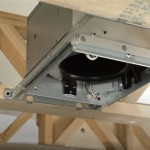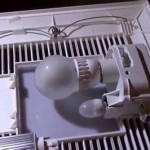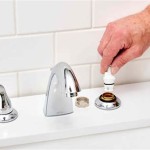How To Fix Bathroom Tiles: A Comprehensive Guide
Bathroom tiles are a durable and attractive surface covering, but they are not immune to damage. Cracks, chips, loose tiles, and stained grout are common problems that can detract from the overall appearance and functionality of a bathroom. Addressing these issues promptly is crucial to prevent further deterioration, such as water damage and mold growth behind the tiles. This article provides a comprehensive guide to fixing various bathroom tile problems, equipping individuals with the knowledge and techniques to restore their bathroom's tiled surfaces to their original condition.
Before embarking on any tile repair project, it is important to gather the necessary tools and materials. This includes items such as a utility knife, grout saw or scoring tool, hammer, chisel, putty knife, sponge, buckets, safety glasses, gloves, mixing bowls, new tiles (matching the existing ones as closely as possible), thin-set mortar, grout, grout sealer, and cleaning solutions. The specific tools and materials required will depend on the type and extent of the damage.
Replacing a Cracked or Chipped Tile
Cracked or chipped tiles are not only unsightly but can also pose a safety hazard. Moisture can seep into the cracks, leading to water damage and mold growth. Replacing a damaged tile involves removing the old tile without damaging adjacent ones, preparing the surface, setting the new tile, and grouting.
The initial step involves removing the grout surrounding the damaged tile. This can be achieved using a grout saw or a scoring tool. A grout saw is a hand-held tool specifically designed for removing grout, while a scoring tool uses a sharpened blade to weaken the grout lines. Care must be taken to avoid damaging the surrounding tiles during this process.
Once the grout has been removed, the damaged tile can be carefully removed. This is often the most challenging part of the process. Using a hammer and chisel, carefully tap the chisel on the tile surface to break it into smaller pieces. Work from the center outwards to minimize the risk of damaging adjacent tiles. Wear safety glasses to protect the eyes from flying debris.
After the tile has been broken into manageable pieces, use a putty knife to carefully pry the pieces away from the underlying surface. If the tile is firmly adhered, it may be necessary to use a heat gun or a hairdryer to soften the adhesive. Be cautious when using heat sources to avoid scorching the surrounding areas.
With the old tile removed, the surface needs to be thoroughly cleaned and prepared. Scrape away any remaining adhesive or mortar using a putty knife. Vacuum the area to remove any dust or debris. If the subfloor is damaged, it may be necessary to repair it before proceeding.
Next, apply a thin layer of thin-set mortar to the prepared surface using a notched trowel. The notch size should be appropriate for the size and type of tile being used. The mortar should be applied evenly to ensure proper adhesion. Follow the manufacturer's instructions for mixing and applying the thin-set mortar.
Carefully position the new tile onto the mortar bed, pressing it firmly into place. Use tile spacers to maintain consistent grout lines. Ensure the tile is level with the surrounding tiles. Excess mortar should be removed immediately using a damp sponge.
Allow the thin-set mortar to cure completely according to the manufacturer's instructions, typically 24-48 hours. Once the mortar is cured, the grout can be applied. Mix the grout according to the manufacturer's instructions and apply it to the grout lines using a grout float. Press the grout firmly into the joints, ensuring they are completely filled.
Remove excess grout with the grout float, wiping diagonally across the tiles. After the grout has partially set, use a damp sponge to clean the tile surfaces. Rinse the sponge frequently to avoid smearing grout residue. Allow the grout to cure completely according to the manufacturer's instructions.
Finally, apply a grout sealer to protect the grout from staining and water damage. The sealer should be applied according to the manufacturer's instructions, typically with a brush or applicator. Wipe away any excess sealer from the tile surfaces. The sealer should be reapplied periodically to maintain its effectiveness.
Addressing Loose Tiles
Loose tiles can be caused by a variety of factors, including moisture, impact, or improper installation. Addressing loose tiles promptly is important to prevent them from detaching completely and causing further damage. The process involves removing the loose tile, cleaning the underlying surface, applying fresh adhesive, and re-setting the tile.
Carefully remove the loose tile. If the tile is only slightly loose, it may be possible to pry it up gently using a putty knife. If the tile is more firmly attached, it may be necessary to use a hammer and chisel, similar to the procedure for removing a cracked tile. However, extra care should be taken to avoid damaging the tile if it is intended to be reused.
Once the tile is removed, thoroughly clean the underlying surface. Scrape away any remaining adhesive or mortar. Vacuum the area to remove any dust or debris. If the subfloor is damaged, it may be necessary to repair it before proceeding.
Apply a fresh layer of thin-set mortar to the prepared surface. The type of mortar used should be appropriate for the type of tile and the substrate. Follow the manufacturer's instructions for mixing and applying the mortar.
Re-set the tile onto the mortar bed, pressing it firmly into place. Ensure the tile is level with the surrounding tiles. Use tile spacers to maintain consistent grout lines. Excess mortar should be removed immediately using a damp sponge.
Allow the mortar to cure completely according to the manufacturer's instructions. Once the mortar is cured, the grout can be inspected and repaired if necessary. If the grout is cracked or missing, it should be replaced following the procedures described in the previous section.
Cleaning and Sealing Grout
Grout is porous and susceptible to staining and discoloration. Regular cleaning and sealing are essential to maintain the appearance of grout and prevent the growth of mold and mildew. Various cleaning methods and sealing products are available, depending on the type and severity of the staining.
For light staining, a simple solution of warm water and mild detergent may be sufficient. Apply the solution to the grout lines and scrub with a stiff-bristled brush. Rinse with clean water and dry thoroughly.
For more stubborn stains, a grout cleaner specifically designed for tile grout may be necessary. These cleaners typically contain stronger chemicals that can effectively remove stains and discoloration. Follow the manufacturer's instructions for using the grout cleaner. Wear gloves and eye protection when using chemical cleaners.
Baking soda and vinegar can also be used as a natural grout cleaner. Mix baking soda and water to form a paste. Apply the paste to the grout lines and let it sit for several minutes. Then, spray the paste with vinegar and scrub with a stiff-bristled brush. Rinse with clean water and dry thoroughly.
Once the grout is clean and dry, it should be sealed to protect it from future staining and water damage. Apply a grout sealer according to the manufacturer's instructions. Allow the sealer to dry completely before using the shower or bathtub. Reapply the sealer periodically, typically every 6-12 months, to maintain its effectiveness.
In cases of severe mold or mildew growth, it may be necessary to use a bleach solution. Mix bleach with water in a well-ventilated area. Apply the solution to the grout lines and let it sit for several minutes. Scrub with a stiff-bristled brush. Rinse with clean water and dry thoroughly. Exercise caution when using bleach, as it can discolor certain surfaces and release harmful fumes.
Proper ventilation is critical when using cleaning chemicals. Open windows and doors to allow for adequate airflow. Wear gloves and eye protection to protect the skin and eyes from irritation.
By following these guidelines, individuals can effectively fix various bathroom tile problems, restoring the beauty and functionality of their tiled surfaces and preventing further damage.

How Do I Repair Tile In A Shower Ceramic

How To Repair Tile Falls Off Shower Wall Ceramic D I Y

How To Prevent Expensive Bathroom Shower Tile And Grout Repair Promaster Home Handyman

Fix Discolored Damaged Bathroom Tiles Total Koatings

Why Ed Tiles In Your Bathroom Are A Problem Shower Sealed

How To Quickly Repair Bathroom Shower Tiles 6 Steps

How To Lay Bathroom Tile 5 Easy Steps Rubi Blog Usa
.png?strip=all)
How To Fix Loose Or Broken Ceramic Floor Tiles

How To Repair Loose Bath Tiles

How To Fix Ed Tile From Hairline Fractures Major Fissures
Related Posts







